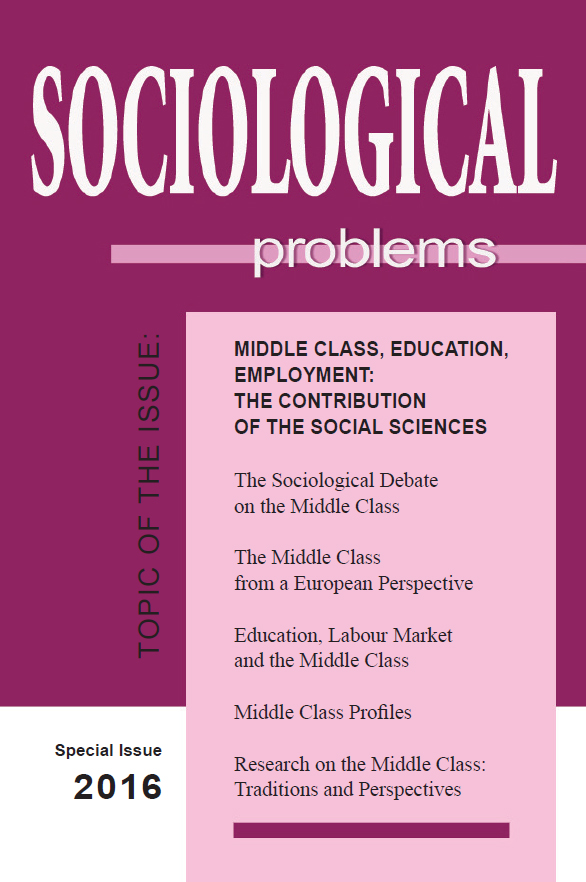Problems and Myths about the Modern Middle Class
Problems and Myths about the Modern Middle Class
Author(s): Tsocho ZlatkovSubject(s): Social Sciences, Sociology, Social development, Social differentiation, Economic development
Published by: Институт по философия и социология при БАН
Keywords: middle class; social category; social class; social stratum; social group; social status; status inconsistency
Summary/Abstract: The term ‘middle class’ has a fairly long history. Its meaning has evolved over time. Today we need to redefine, revise the meaning of this term with respect to the social- group components it refers to and the criteria for its clear and definite distinction of a class. The article is methodological in its perspective. I will not dwell on the origin and development of the term ‘middle class’; the aim of this article is to point out some current issues facing the methodology used to define this class. It must be emphasized that the term ‘middle class’ is ambiguous, quite broad and relatively abstract, and is heavily dependent on the theoretical and methodological concepts related to social stratification. It is hard to define the modern middle class as a social group, much less as a social class. This ‘class’ is inherently less differentiated in terms of economic-professional attitude and culture and social-group consciousness. Four approaches are discussed in the article. The first might be called a nominal approach, where a significant role is played by the self-identification of the respondents within the social pyramid schemas or models offered by researchers. The second could be called a fiscal approach, where affiliation to the ‘middle class’ is determined according to income criteria. The third approach might be called functional-axiological – as based on the definition of the particular social roles, societal functions and professional roles of certain social groups or strata. The last approach, which I will only briefly define, is strongly connected with the preceding one and is based on the affiliation of individuals to the middle class as determined by their lifestyles, specific leisure time patterns, and consumption behavior and patterns.
Journal: Социологически проблеми
- Issue Year: 48/2016
- Issue No: Special
- Page Range: 205-214
- Page Count: 10
- Language: English
- Content File-PDF

